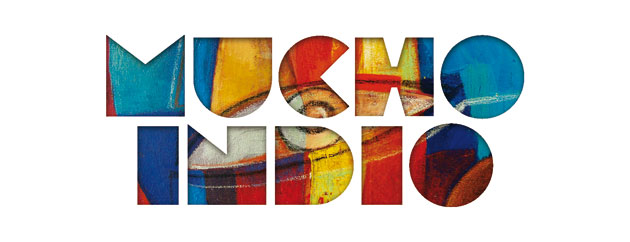
Review Mucho Indio
Released in Colombia last year to little fanfare, Mucho Indio is a project and album that quite literally snuck under our radar. Which is a huge shame because it’s one of the most interesting, rhythmic and texturally intense albums to come out of Colombia in some time.
The album and project are led by Teto Ocampo, former guitarist for Sidestepper, Bloque and Carlos Vives. After being invited to organise a number of musical events to raise awareness of problems facing the indigenous communities of Colombia, he became more and more interested in the idea of pairing indigenous musicians and their songs with musicians and ideas from his own generation. Not someone to do things lightly, he then made multiple trips to a variety of indigenous communities in Colombia, recording songs and also listening to the stories that form a huge part of their culture. He then re-arranged, re-imagined and re-configured these songs and melodies with the help of friends in Bogotá to produce Mucho Indio.
The resultant album is full of rhythmic and texturally rich compositions that highlight the joy in the melodies of these indigenous communities. “Ik’nusi” is the perfect example, an effervescent, floating melody that continually contracts and expands, the production keeping the song interesting while the main motif simply blossoms. Track after track the formula for each song changes, sometimes using the original recording for the main rhythm, sometimes reinterpreted by Teto, with vocalists and instruments changing often. The general feel, crucially, remains the same, which is one of elevation, with not a jot of sadness in sight.
If you wanted to do you could divide the album into two halfs, with half favouring progression and the rest focusing on repetition. “Ik’nusi” and the Paul Simon-esque “Ka Ashambujuk” are the best examples of the progressive side, both equipped with gorgeous tunes that really should be heard by more people. On the other side of the coin are songs like “Wayuunaiki” and “Buy Nayma” whose repetition and use of wind instruments rather than stringed create a deeper, hallucinatory effect which lead you to believe these are songs attached with the rituals of these communities.
Escaping this easy categorisation is “Llehue”; led by a harmonica-like lead melody, the use of electronics and drums in the background raise it to an effervescent dance groove. It’s one of many highlights on Mucho Indio, an album that continually surprises with the quality and density of both it’s spirit and musical richness.
You can find out more about Mucho Indio at muchoindio.org. The album is available as a digital download from polenrecords.com/album/mucho-indio
Listen to the album below:
Follow Sounds and Colours: Facebook / Twitter / Instagram / Mixcloud / Soundcloud / Bandcamp
Subscribe to the Sounds and Colours Newsletter for regular updates, news and competitions bringing the best of Latin American culture direct to your Inbox.

